Malcolm Joseph Pitre of Prince Edward Island asked for information that might help him resist the PEI provincial Government’s plan to introduce Chloropicrin for soil sterilization for a fruit farm, presumably strawberry.
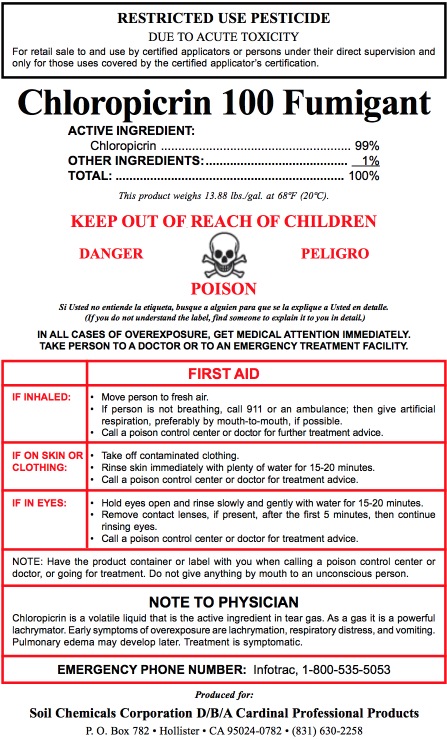
I tried contacting Dr. Don Huber, professor emeritus, Purdue University. But he was not around. So I called Anthony Samsel of Cambridge, Massachusetts. Dr. Samsel knew Cholopicrin and told me much about it, which I recorded for listeners here.
Chloropicrin was a chemical warfare agent in the first World War, was stored in WW II, but is now banned, I believe, from military use – but is still used in Agriculture, for example as a soil fumigant. CDC identifies this chemical as a Lung Damaging Agent.
It is hazardous, a killer. Some of it would evaporate out of the soil after use. This gas is heavier than air and would stay close to the ground. The safety warnings say people should stay away from it. As Sr. Samsel said, non-toxic methods are less harmful and should be the first choice – such as steam sterilization methods. These technologies exist, and units are available that can be hauled as a trailer to site. A few samples are given here.
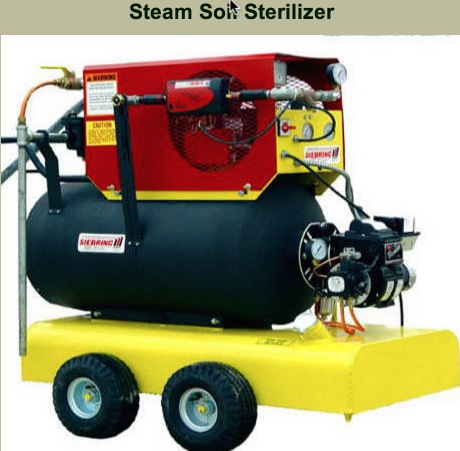
There are quite a few examples of steam soil sterilizers out there if one googles it. There may be someone within PEI that can source one locally or from within the maritime provinces. There are many documents freely available on line that give examples of how to use Steam, or even solar power to organically sterilize a patch of soil before planting. If needed, I wonder if Av Singh of Nova Scotia might help locate one, or offer advise on another non-toxic method of doing the same job.
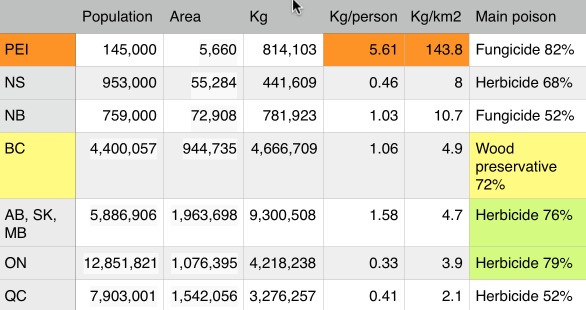
As to calculating the pesticide load, I first picked the data off Environment Canada’s document on pesticide use in PEI as well as other provinces. Then I checked the area and the population, to create a table of per capita and per unit area, the average pesticide use for each province. PEI stands out in contrast because of the high pesticide load, which is ten times higher per capita and up to 17 times higher per unit area, compared to its neighbour Nova Scotia. It also appears to be way higher that any other region in Canada.
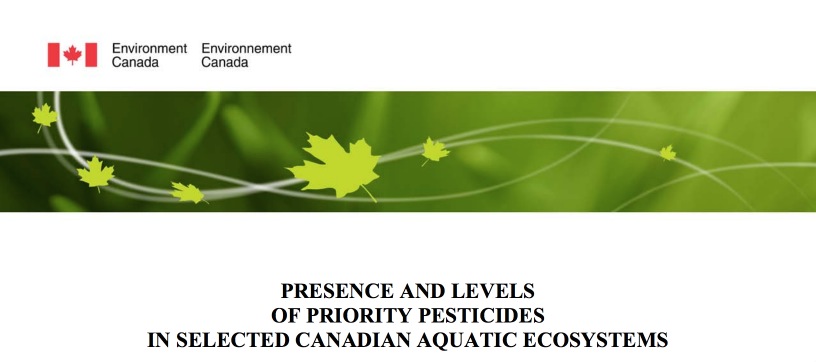
I would not be surprised if reported cases show higher occurrence of some disease, such as Cancer,Crohn’s disease, Celiac, Autism, obesity, and other illnesses were higher per unit population than elsewhere in Canada. However, I do not have the data, and it would be important to get the information on this. I did write a letter( emails ) to the Government of PEI, but received no response. I have not checked thoroughly for the PEI government information online, and would encourage local residents to try to locate or ask for information on annual reported cases of these illnesses and then see how they measure up against the rest of Canada and the rest of the western world.
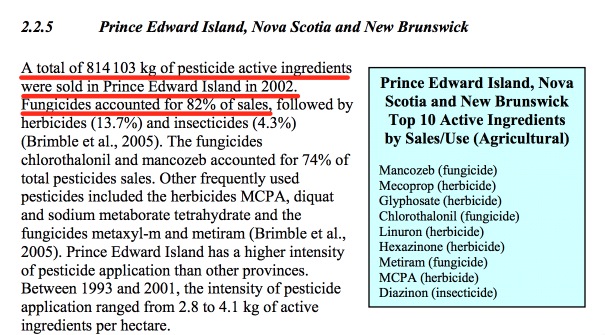
After all, PEI is part of Canada and Canada is not exactly a third world country – or is it?
Gutsy Walk for Crohn’s and Colitis Canada, for example, says in its web site:
“Canada has one of the highest rates for Crohn’s disease and ulcerative colitis in the world and those rates are increasing. Most alarming, the number of new cases of Crohn’s disease in Canadian children has almost doubled since 1995. Crohn’s and colitis are lifelong diseases that can have a devastating impact on quality of life, elevate the risk of colorectal cancer, and in the case of Crohn’s disease, shorten life expectancy“.
Sustainable Pulse, for example, has an article about the link between Monsanto’s Roundup and Global Bloom of Celiac disease and Gluten intolerance.
There are more things in the pipeline for Prince Edward Island, the maritime Provinces and the rest of Canada. One of them is about testing of Glyphosate in body fluids such as blood, urine, breast milk and also soil samples.
Dr. Anthony Samsel and Stephanie Seneff have gotten engaged in providing a service that includes scientific analysis of the data, and on a more professional level. This service is provided to the right candidates in Canada. The right candidates would be those that are already sick from exposure, and those that are suspect due to living close to areas with heavy pesticide use, or are not so careful with what they eat. Nursing mothers with babies are preferred if they are suspect, since they can provide multiple samples, that could prove bio-accumulation of the material.
The cost of each test is US$ 100, to be paid ahead of the tests. Should a deserving candidate cannot afford to pay for the test, Drs. Samsel and Seneff will try to cover it out of their own pocket.
From our end, we need to identify the right candidates, and if they cannot afford the test, we should consider raising funds to help out, and not tax Dr. Samsel and Dr. Seneff far as possible.
More on all this later. This part of the talk (testing for Glyphosate) is not included in the podcast and will be covered with more detail down the line.
For now, you can click on the play button and listen to the 10 minute podcast of Dr. Samsel about a cleaner method for soil sterilization that Chloropicrin – for residents of PEI.
I shall be most happy to hear your comments to: tony.mitra@gmail.com
Thanks/ Tony






